Donald Byrd
Donald Byrd & The Blackbirds - The Jazz Funk Collection (2020) {3CD Set, Robinsongs--Cherry Red QROBIN43CDT rec 1972-1981} Music
Posted by ruskaval at June 15, 2020
Donald Byrd & The Blackbirds - The Jazz Funk Collection (2020) {3CD Set, Robinsongs–Cherry Red QROBIN43CDT rec 1972-1981}
EAC rip (secure mode) | FLAC (tracks)+CUE+LOG -> 1.42 Gb | MP3 @320 -> 505 Mb
Artwork @ 300 dpi (jpg) -> 22 Mb | 5% repair rar
© 1972-81, 2020 Robinsongs / Cherry Red Records | QROBIN43CDT
Jazz / Jazz Funk / Trumpet
Issued in a four-panel Digipak. Donald Byrd & The Blackbyrds' The Jazz Funk Collection is the first time you have been able to acquire a collection of tracks by these artists on a CD package. All tracks on The Jazz Funk Collection are either written, produced or performed by Donald Byrd; the collection starts in 1973 around the start of the jazz funk era.
Donald Byrd - Don't Worry Be Jazzy By Donald Byrd (2013) Music
Posted by DjangoTiger at Dec. 3, 2013
Donald Byrd - Don't Worry Be Jazzy By Donald Byrd (2013)
MP3 CBR 320 kbps | 12 Tracks | 01:21:38 | 187,78 MB
Genre: Jazz, Swing, Bebop, Funk, Soul | Label: Be Jazzy
MP3 CBR 320 kbps | 12 Tracks | 01:21:38 | 187,78 MB
Genre: Jazz, Swing, Bebop, Funk, Soul | Label: Be Jazzy
Donaldson Toussaint L'Ouverture Byrd II (December 9, 1932 – February 4, 2013) was an American jazz and rhythm and blues trumpeter. A sideman for many other jazz musicians of his generation, Byrd was best known as one of the only bebop jazz musicians who successfully pioneered the funk and soul genres while simultaneously remaining a jazz artist. As a bandleader, Byrd is also notable for his influential role in the early career of renowned keyboard player and composer Herbie Hancock.
Donald Byrd - Live: Cookin' with Blue Note at Montreux (2022) Music
Posted by Rtax at Dec. 8, 2022
Donald Byrd - Live: Cookin' with Blue Note at Montreux (2022)
WEB FLAC (tracks) - 297 MB | MP3 CBR 320 kbps - 106 MB
45:22 | Jazz, Funk, Soul | Label: Blue Note Records
WEB FLAC (tracks) - 297 MB | MP3 CBR 320 kbps - 106 MB
45:22 | Jazz, Funk, Soul | Label: Blue Note Records
In July 1973, Blue Note Records headed to Montreux, Switzerland to showcase several of the label’s stars at the Montreux Jazz Festival. Produced by Blue Note President George Butler, live albums all titled Live: Cookin’ with Blue Note at Montreux followed from vibraphonist Bobby Hutcherson, organist Ronnie Foster, flutist Bobbi Humphrey, and vocalist Marlena Shaw, but one of the performances by trumpeter Donald Byrd remained unreleased in the Blue Note vaults, until now.
Donald Byrd & The Blackbyrds - The Jazz Funk Collection (2020) Music
Posted by Rtax at May 13, 2024
Donald Byrd & The Blackbyrds - The Jazz Funk Collection (2020)
EAC Rip | FLAC (tracks, cue, log, scans) - 1.3 GB | MP3 CBR 320 kbps - 507 MB
3:30:26 | Jazz-Funk, Disco | Label: Robinsongs
EAC Rip | FLAC (tracks, cue, log, scans) - 1.3 GB | MP3 CBR 320 kbps - 507 MB
3:30:26 | Jazz-Funk, Disco | Label: Robinsongs
Donald Byrd & The Blackbyrds “The Jazz Funk Collection” is the first time you have been able to acquire a collection of tracks by these artists on a CD package. All tracks on “The Jazz Funk Collection” are either written, produced or performed by Donald Byrd; the collection starts in 1973 around the start of the Jazz Funk era. Donald Byrd started recording in the mid-fifties, but by the late-sixties and now on Blue Note Records his style became more electric and was one of the instigators of the Jazz Funk scene. Our package kicks off with ‘Lansana’s Priestess’ from the 1973 album “Street Lady” nearly eight minutes of pure Jazz Funk produced by the legendary Mizell Brothers. Followed by a slew of classic Donald Byrd tracks such as ‘Black Byrd’, ‘Loves So Far Away’ and ‘Flight Time’ to name but a few.
Grant Green & Donald Byrd - His Majesty King Funk & Up With Donald Byrd (1995) {Verve 559 621-2 rec 1964-1965} Music
Posted by ruskaval at May 11, 2020
Grant Green & Donald Byrd - His Majesty King Funk & Up With Donald Byrd (1995) {Verve 559 621-2 rec 1964-1965}
EAC rip (secure mode) | FLAC (tracks)+CUE+LOG -> 460 Mb | MP3 @320 -> 179 Mb
Artwork @ 300 dpi (jpg) -> 10 Mb | 5% repair rar
© 1964-65, 1995 Verve / PolyGram | 559 621-2 | Jazz: The Verve Collection Series
Jazz / Jazz Funk / Soul Jazz / Guitar / Trumpet
2 of the grooviest Verve 60s jazz funk sessions on one CD! Grant Green's His Majesty King Funk is a tight quintet session with Larry Young on organ and Harold Vick on tenor, and it grooves with a tightness that matches Green's best Blue Note sessions. The album is reissued here with the tracks in their full versions, and titles include "The Selma March", "Daddy Grapes", and "The Cantaloupe Woman". The record is paired with Donald Byrd's groovy Up album, a record that has his funky trumpet playing with a larger group arranged by Herbie Hancock, that also features some added vocal backing at times. The record has a very tasty version of "Cantaloupe Island", plus the cuts "Blind Man, Blind Man", "Bossa", and "Boom, Boom". Nice groovy 60's material, with 14 cuts in all!
Donald Byrd - Caricatures (1976) (Remastered 2003) Music
Posted by Bezz at Dec. 22, 2010
Donald Byrd - Caricatures (1976) (Remastered 2003)
Jazz | EAC rip | FLAC + CUE + LOG | Full Scans | 260 Mb
Label ~ Blue Note Records
Jazz | EAC rip | FLAC + CUE + LOG | Full Scans | 260 Mb
Label ~ Blue Note Records
One of his last efforts with the Mizell production team was definitely not his most critically acclaimed, but Caricatures continued Byrd's commercial winning streak that started years previous with 1969's Kofi and such '70s Blue Note classics as Places and Spaces, Black Byrd, and Street Lady. His last release for the label was no exception to the formula set forth from the previously mentioned albums. ~ AllMusic
Donald Byrd And 125th Street, N.Y.C. - Words, Sounds, Colors And Shapes (1982) [2007, Remastered Reissue] Music
Posted by BlondStyle at Feb. 19, 2020
Donald Byrd & 125th Street, N.Y.C. - Words, Sounds, Colors & Shapes (1982) [2007, Remastered Reissue]
R&B, Jazz-Funk, Electronic, Disco | EAC Rip | FLAC, Img+CUE+LOG+Scans (JPEG) | 40:13 | 286,86 Mb
Label: Elektra/Wounded Bird Records (USA) | Cat.# WOU 6188 | Released: 2007-07-17 (1982)
R&B, Jazz-Funk, Electronic, Disco | EAC Rip | FLAC, Img+CUE+LOG+Scans (JPEG) | 40:13 | 286,86 Mb
Label: Elektra/Wounded Bird Records (USA) | Cat.# WOU 6188 | Released: 2007-07-17 (1982)
A definite soul based session for Donald Byrd – and that's saying a lot here, because his previous decade's worth of work had all had some sort of R&B focus. The main force behind the set here is Isaac Hayes – who's producing, arranging, and playing most of the keyboards on the album. Oddly, Ike's not singing at all – and vocals are instead handled by Rose Williams, Diane Davis, Pat Lewis, and Myra Walker – plus the Hot Buttered Soul group on backing vocals.
The Gigi Gryce/Donald Byrd Jazz Laboratory & The Cecil Taylor Quartet - At Newport (1957) {2002 Verve Music Group} **[RE-UP]** Music
Posted by TestTickles at Oct. 12, 2017
The Gigi Gryce, Donald Byrd Jazz Laboratory & The Cecil Taylor Quartet - At Newport (1957) {2002 Verve Music Group}
EAC Rip | FLAC with CUE and log | scans | 165 mb
MP3 CBR 320kbps | RAR | 110 mb
Genre: jazz
EAC Rip | FLAC with CUE and log | scans | 165 mb
MP3 CBR 320kbps | RAR | 110 mb
Genre: jazz
At Newport is the 1957 album by two groups: The Gigi Gryce, Donald Byrd Jazz Laboratory & The Cecil Taylor Quartet. Each group has three songs each. Originally released on Verve, this was released by Verve Music Group on 20 August, 2002.
Donald Byrd - Fancy Free (1969) Music
Posted by intothe at March 6, 2009
Donald Byrd - Fancy Free (1969)
Jazz | FLAC & mp3 (320k/s) | 250 & 91 MB | scans | 39:12
Blue Note (1993)
Jazz | FLAC & mp3 (320k/s) | 250 & 91 MB | scans | 39:12
Blue Note (1993)
Donald Byrd And 125th Street, N.Y.C. - Love Byrd (1981) [2007, Remastered Reissue] Music
Posted by BlondStyle at March 16, 2020
Donald Byrd And 125th Street, N.Y.C. - Love Byrd (1981) [2007, Remastered Reissue]
R&B, Jazz, Soul, Jazz-Funk, Disco | EAC Rip | FLAC, Img+CUE+LOG+Scans (PNG) | 42:17 | 296,99 Mb
Label: Elektra/Wounded Bird Records (USA) | Cat.# WOU 6531 | Released: 2007-07-16 (1981)
R&B, Jazz, Soul, Jazz-Funk, Disco | EAC Rip | FLAC, Img+CUE+LOG+Scans (PNG) | 42:17 | 296,99 Mb
Label: Elektra/Wounded Bird Records (USA) | Cat.# WOU 6531 | Released: 2007-07-16 (1981)
Recorded in 1981 and produced by Isaac Hayes, trumpeter and composer Donald Byrd's first recording for Elektra is the sound of a musician who has truly lost his way. Byrd's nearly decade-long collaboration with the Mizell Brothers ended when he left Blue Note for Elektra. It wasn't so much that Byrd left "jazz" for funk and proto-disco, the latter elements had been part of his sound since 1972 with Black Byrd (some would say the real transition to more R&B based music began before that with Fancy Free in 1965). The period with the Mizells, though decried by jazz critics everywhere as a sellout, was a fertile one for Byrd creatively and married his vision of being a viable and accessible artist, one who sought out the direct experience of soul and funk as a way of getting his music across. It was also a successful one commercially - his albums sold to a wider audience and were played on commercial FM radio.

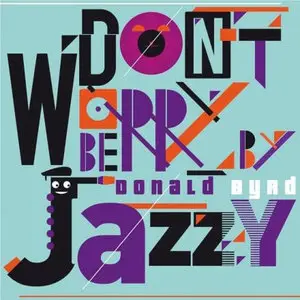
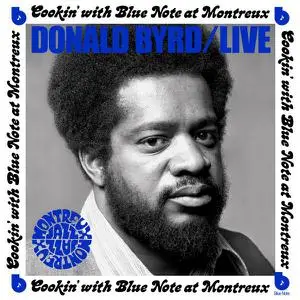
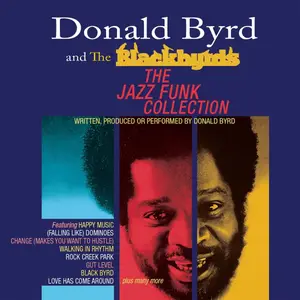
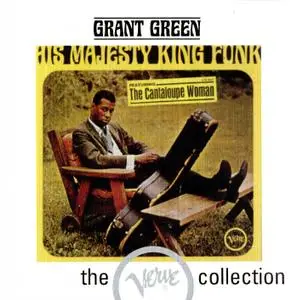
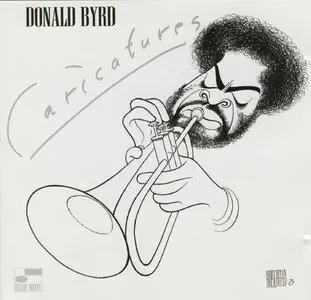
![Donald Byrd And 125th Street, N.Y.C. - Words, Sounds, Colors And Shapes (1982) [2007, Remastered Reissue]](https://pixhost.icu/avaxhome/73/f0/0073f073_medium.jpg)
![The Gigi Gryce/Donald Byrd Jazz Laboratory & The Cecil Taylor Quartet - At Newport (1957) {2002 Verve Music Group} **[RE-UP]**](https://pixhost.icu/avaxhome/9b/f2/003bf29b_medium.jpg)
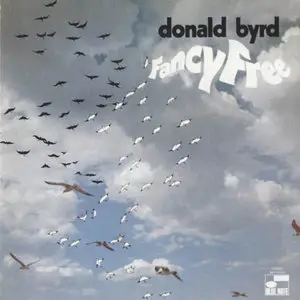
![Donald Byrd And 125th Street, N.Y.C. - Love Byrd (1981) [2007, Remastered Reissue]](https://pixhost.icu/avaxhome/16/0d/00750d16_medium.jpg)